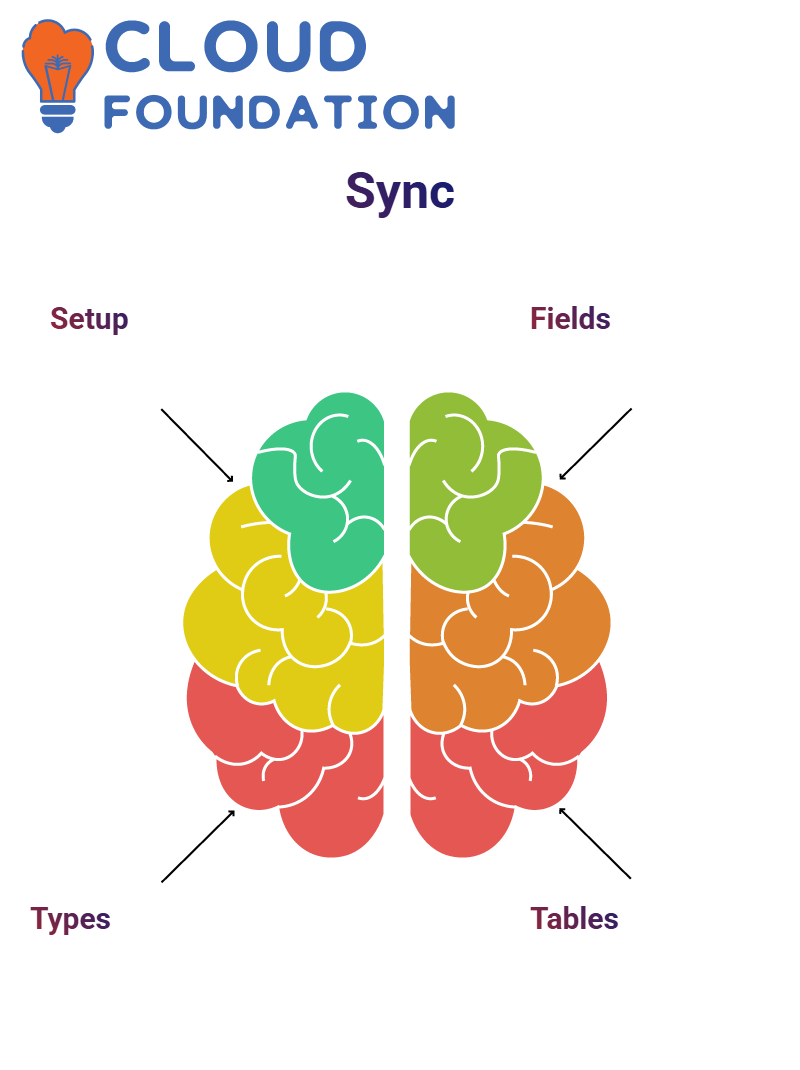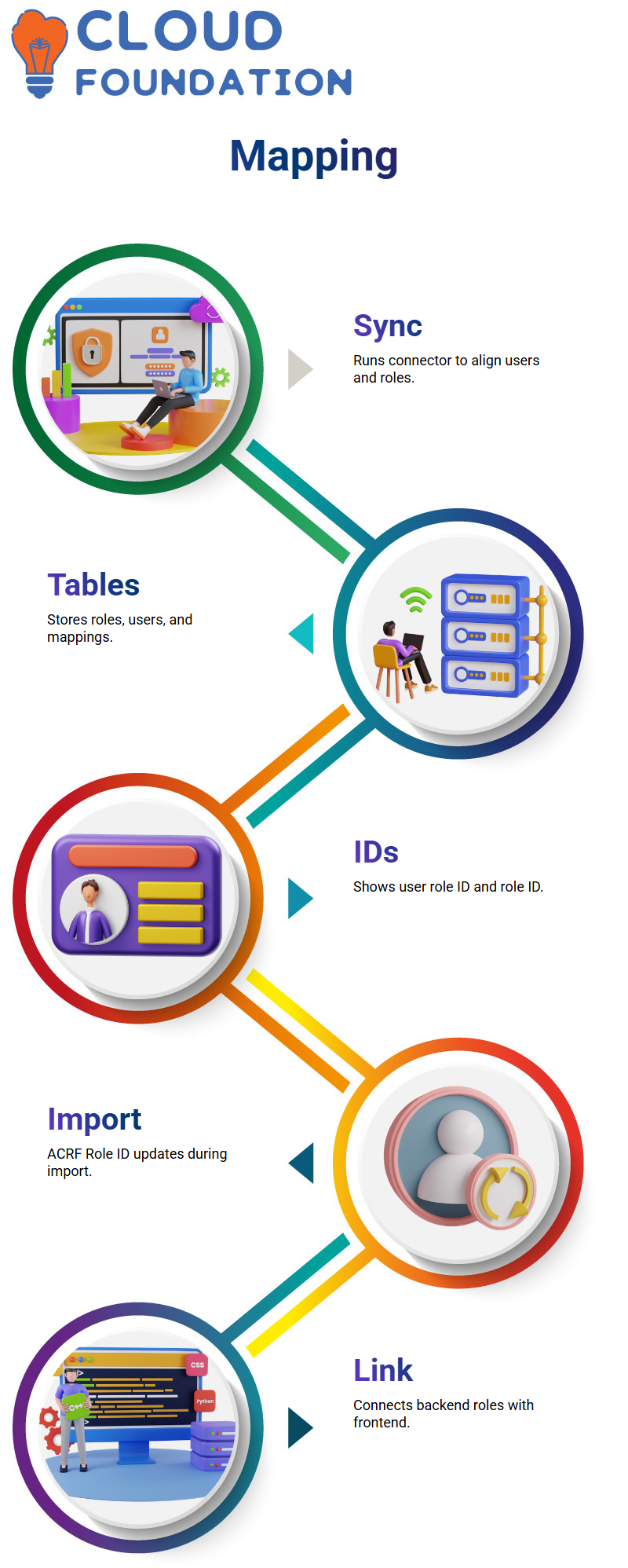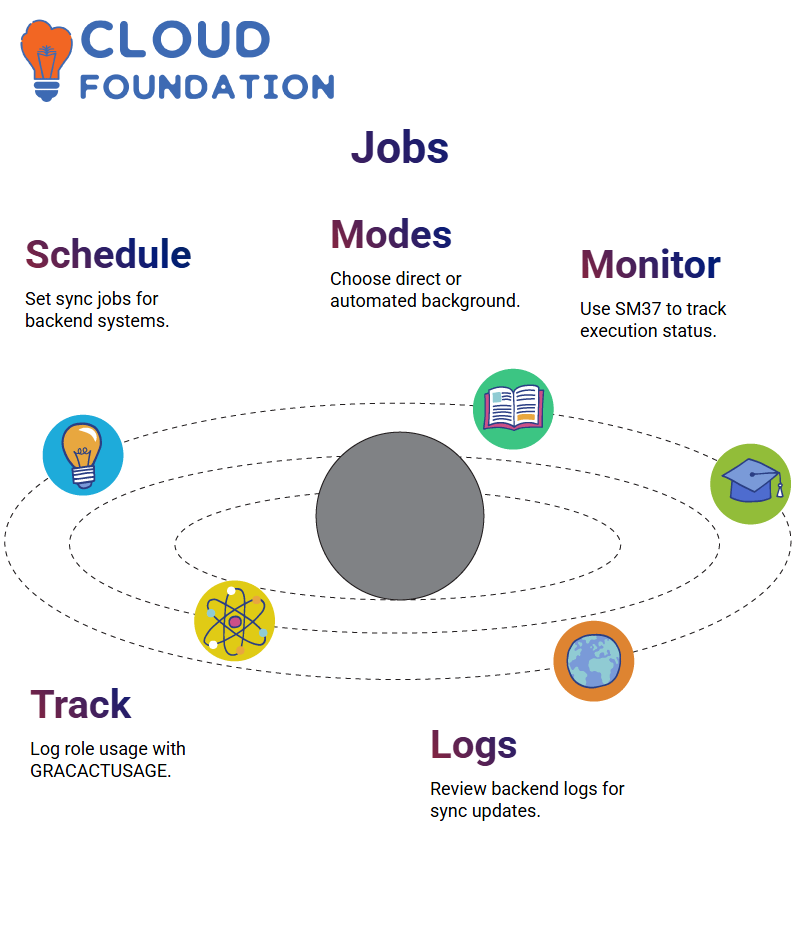SAP GRC Online training
SAP GRC: Access Control
SAP GRC was put through its paces as it explored access control tasks. SAP GRC is more than a buzzword: it encompasses compliance, controls and integration that ensure systems operate securely and efficiently.
Starting our SAP GRC journey involved maintaining Connected Settings and Groups. If you have ever worked with SAP GRC before, understanding connector actions and target configurations is foundational to its operation and will shape how SAP GRC interacts with backend systems. We then began with “Maintain Connected Groups.”

SAP GRC Repository Sync
As part of SAP GRC’s access control module, synchronising repository objects becomes essential.
I stress the significance of aligning profile, role and user synchronisations; these elements help validate roles during access request validation processes in SAP GRC.
This means when making requests in SAP GRC, the system verifies whether that role exists to minimise surprises later.
Documentation surrounding SAP GRC customisation activities provides details regarding this relationship between roles. I frequently utilise it during setup.
Before wrapping up, I always verify the job status and table population in SAP GRC. Even if some data appears delayed initially, SAP GRC typically resolves any discrepancies after execution has been completed successfully.
You will see backend information appear within its tables to indicate successful repository sync.
Working with SAP GRC requires some initial adjustments, but once you understand its synchronisation mechanics, it becomes a powerful compliance management solution.
SAP GRC Table Syncing
An ideal SAP GRC setup involves scheduling repository jobs at regular intervals. I walked through the backend system using T0 CLNT 900 to create a user with basic details.
As soon as I assigned both roles and passwords for my new SAP GRC user, it was created successfully, but wouldn’t appear in the frontend until I triggered the sync job again. Once this had taken place, it appeared in perfect sync.
SAP GRC supports two sync types, full sync and incremental sync. Full sync starts from scratch, assuming no prior data exists, before commencing its analysis process.
Incremental sync only updates the delta, making updates more expeditious. I prefer incremental sync for faster results when updating user details, such as group memberships, validity dates, and security information.
Once I changed these fields in the backend, they did not immediately reflect in the frontend until after running an SAP GRC repository sync.
Following its execution, all fields — valid from, valid to, and security — appeared instantly in the frontend.
This flow brought back memories of SAP HANA’s behaviour, where three specific tables are updated during migration or sync: DD01T, DD00AT, and DD01L.
Although SAP GRC operates differently from HANA in terms of table interactions and migration patterns, understanding its syncing logic helped clarify some backend table relationships more fully.
Creation and assignment of users don’t guarantee visibility until confirmed through sync jobs. Working with SAP GRC should make this an effortless part of your daily routine, eliminating frontend inconsistencies after your backend processes are timed precisely.
Even when roles and users appear to be missing, this is rarely due to data issues; more likely, it’s a sync delay. That is why I always check SAP GRC job status before beginning troubleshooting efforts.

SAP GRC Sync Jobs
Before initiating sync jobs in SAP GRC, make sure that all necessary backend components have been installed.
We decided not to utilise high availability systems but instead chose the GRCPI NW plugin, as this choice affects how SAP GRC connects with backend systems.
I double-checked the component network setup and verified that J-R-C-P-N was configured appropriately.
This integration serves as the gateway through which SAP GRC syncs data between backend databases and its repositories.
SAP GRC User and Role Mapping
SAP GRC handles user role synchronisation across backend systems with ease, so I began by running the GRAC user role connector with a test user ID and observed how SAP GRC changed both users and associated role IDs to demonstrate data flow during synchronisation.
SAP GRC includes tables that store role information and user details as well as mappings between them.
When displayed using parameters, user role ID and role ID appear prominently, confirming their distinct identities within SAP GRC.
As I validated role ID assignments across tables, it became evident how SAP GRC seamlessly links backend role assignments directly with frontend configurations and, accordingly, updates new role entries directly in its frontend configurations.
I observed how SAP GRC enabled this tight coupling as it refreshed new role entries immediately upon refresh.

SAP GRC Role ID Validation and ACRF Role ID
SAP GRC simplifies the task of importing roles by automatically updating fields, such as ACRF Role ID, during the import process.
This ID references each backend role that was imported and gets stored during this process.
SAP GRC does not natively support backend roles. Therefore, we import them specifically for raising access requests or other purposeful activities, and once imported, the system updates the associated identifiers with the updated records to maintain traceability and governance.
With our hands-on approach, SAP GRC demonstrated precise coordination between backend and frontend roles, enabling easy transitions and approvals across systems.
SAP GRC Authorisation and Job Scheduling
Utilising SAP GRC, I scheduled an authorisation sync job against our TT0_CL2900 backend system. SAP GRC allows for either direct or background scheduling; I prefer background as it prevents interruption and provides more automation.
Once scheduled, we use transaction SM37 to check the execution status. SAP GRC displays success and spool logs for each job, making my monitoring easier and ensuring that synchronisation jobs run as intended.

SAP GRC Background Jobs
After checking SAP GRC’s background jobs using transaction SM37, I observed that the authorisation sync remained active.
These jobs handle intensive data, such as role authorisations; SAP GRC ensures this data reaches backend systems correctly during execution.
SAP GRC allows role usage tracking via tables such as GRACACTUSAGE. Running background jobs for all users captures transactions that users have completed and syncs that data with SAP GRC for analysis.
Although I didn’t initially see updates, the process outlined how SAP GRC utilises backend execution logs.
SAP GRC Data Tables
Once a repository sync has completed, SAP GRC populates various internal tables, such as GRACUSERCONN and GRACREPOSITORY, two essential databases within SAP GRC that store user connection details from backend systems and role definitions, respectively.
I always emphasise these tables when working with SAP GRC, because when users or roles are created on the backend, SAP GRC reflects these through sync jobs to populate each table correctly and create a seamless user management experience.

Table Queries in SAP GRC
As part of my verification efforts, I conducted queries against GRACUSERCONN within SAP GRC using our connector ID to validate that the backend data had synced properly with SAP.
SAP GRC displayed filled entries, indicating successful repository synchronisation.
Experience SAP GRC makes its work worthwhile: seeing data appear in SAP GRC tables is proof that your configuration was effective, giving confidence that access control flows are in place and ready for action. Seeing your configuration come alive makes working with SAP GRC truly fulfilling!
SAP GRC Transactions and Emergency Access
SAP GRC monitors transaction codes executed across systems by users. When performing synchronisation, SAP GRC populates tables with entries from backend logs showing usage counts and transaction histories for these records.
Later, I examined SAP GRC documentation for legacy systems. SAP GRC allows the synchronisation of role usage data on older platforms with SAP, providing insight into transactional behaviours. Finally, I introduced its emergency access feature (also referred to as firefighter IDs).
SAP GRC monitors these activities by recording transaction codes executed and logs that reinforce its governance model.

SAP GRC Firefighter Access in Workflows
As soon as you log onto SAP GRC, one of the first things that becomes evident is its access control process. After receiving a Firefighter ID number, I began tasks accordingly.
Once activities have been completed, they must be reviewed. My experience suggests the assistant controller assumes this responsibility for review purposes, which will ultimately decide whether you can continue.
With SAP GRC’s Firefighter sessions, tracking emergency access requests made directly becomes significantly smoother and more efficient.
Starting to work in SAP GRC the right way requires appropriate permissions, especially when employing Firefighter IDs.
At times when I couldn’t complete tasks due to missing access credentials, SAP GRC provided invaluable structure and checks into my workflow process.
As someone deeply immersed in SAP GRC, I’ve witnessed firsthand its effectiveness at helping prevent unauthorised activities while simultaneously permitting critical operations to proceed smoothly.
Through training sessions, I often explain to colleagues why SAP GRC processes have been designed with accountability at heart.
SAP GRC makes logs an integral component of its governance model when initiating Firefighter sessions, with access being granted within strict time frames and thoroughly reviewed afterwards. That makes up one fundamental tenet of SAP GRC governance.
I’ve led workshops where we discussed SAP GRC activities. A common question I hear from participants is about planning practical sessions; specifically, whether one should begin by conducting risk analyses or by accessing Firefighter access first.
As far as I can see, beginning access conflict reviews within SAP GRC provides greater clarity. Doing this establishes the necessary structure to continue step by step.

Navya Chandrika
Author



